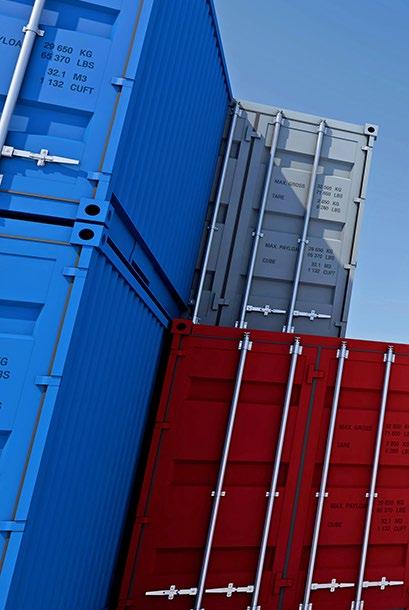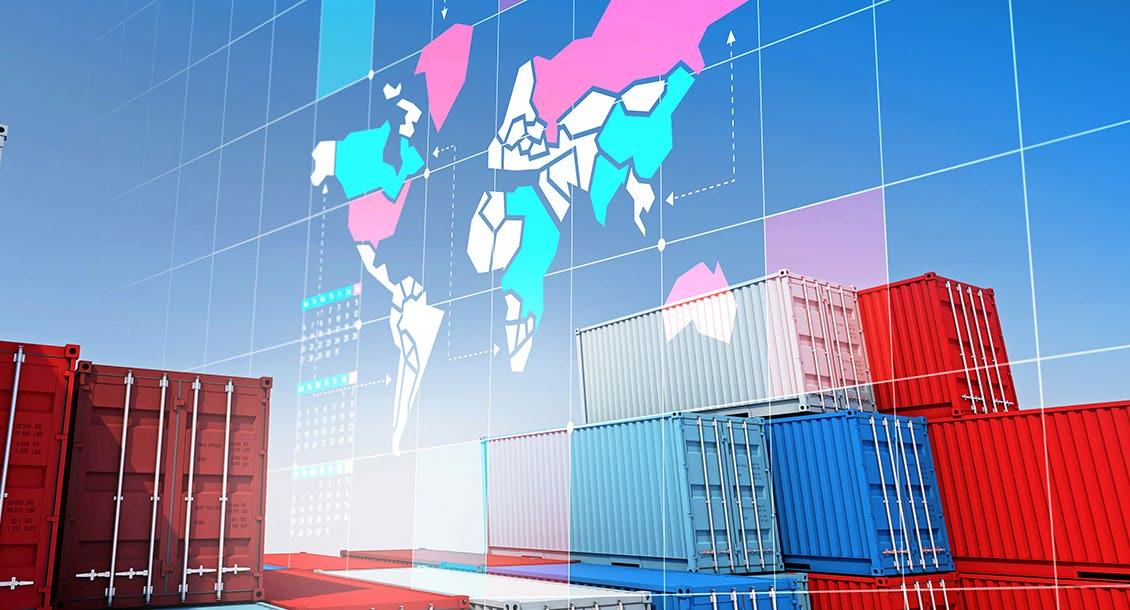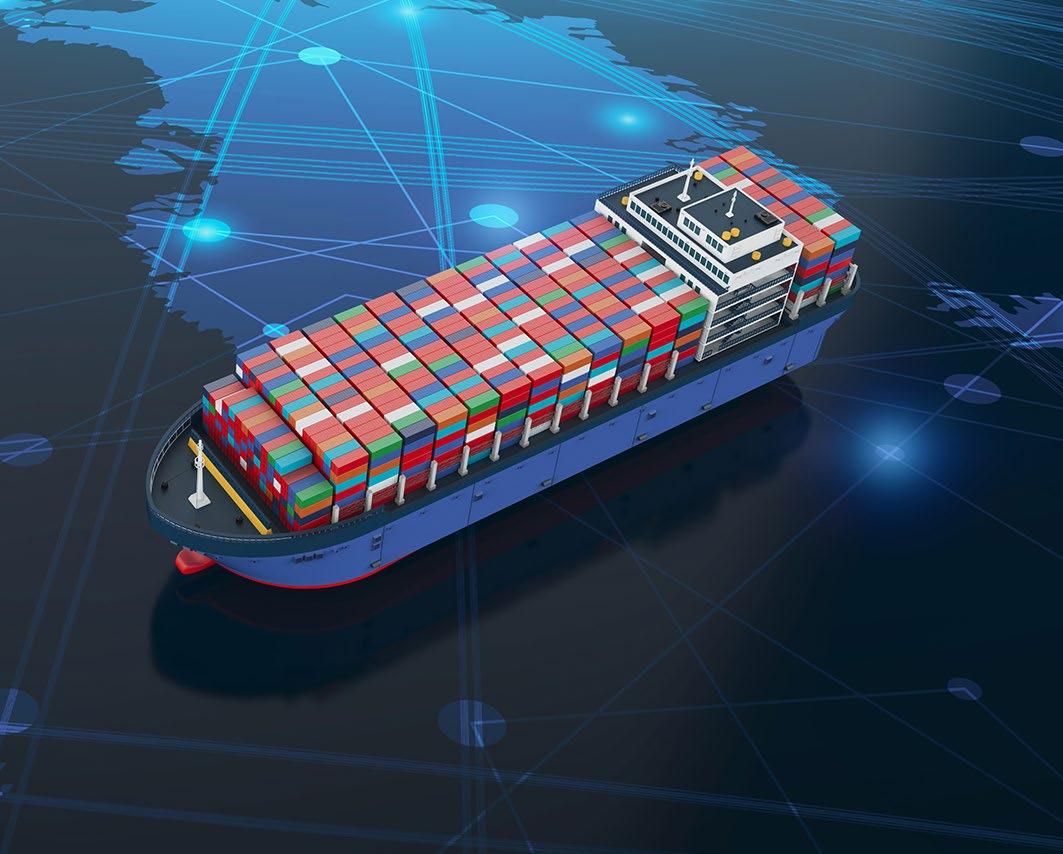
4 minute read
3.2 Correspondent banking in an era of evolving international trade

Since the inception of international commerce, correspondent banking has played a vital role in facilitating the smooth flow of trade and ensuring timely settlement of payments. The search continues for a solution allowing crossborder payments to be fast, cheap, universal, and settled in real-time. This article focuses on correspondent banking, its role in international trade, and shortfalls of the traditional model that adversely affect lowerincome countries, impeding economic development and the advancement of financial inclusion.
What is Correspondent Banking?
Correspondent Banking (‘CB’) means a bank (Correspondent) in one country providing thirdparty treasury services on behalf of a bank (Respondent), typically in another country.
Correspondent banks are third-party agents acting as intermediaries between originating and receiving banks in different countries, allowing them to make payments and settle in foreign currencies in jurisdictions where they don’t have branches or a direct license to operate.
Correspondent services generally include funds transfer, bank wires, currency exchange and settlement, and cheque clearing. This is done through accounts that Correspondents and Respondents hold for one another for the purpose of tracking transactions - debits and credits.
An account held by a domestic bank, at a bank overseas is referred to as nostro (“our account at your bank”) and, conversely, the account it holds for its overseas counterpart is referred to as vostro (“your account at our bank”).
The CB model has a long history and remains the trusted method of making international trade payments in fiat currencies, as well as the primary option for wholesale settlement of crossborder payments.

A cross-border payment is a transfer of value performed by crediting an account in one country and by debiting a corresponding amount to an account in the other. No money actually moves, only nostro/ vostro balances get updated.
To execute a payment, banks exchange payment instructions using a variety of methods to message each other. Since the 1970s, international wire transfers are executed primarily through the SWIFT (Society for Worldwide Interbank Financial Telecommunication) network, which underpins the traditional CB model for international payments.
Banks in different countries can send wires directly to each other, on the condition that they have an established working (account) relationship. In case there isn’t a relationship with the receiving bank, the originating bank needs to seek a Correspondent that holds accounts with both banks.
More than one Correspondent may be used to complete a cross-border payment, particularly when involving minor currencies. This, however, lengthens the payment chain which adds cost and delays.
Settlement is the exchanging of funds between banks at both ends of a cross-border payment. To settle payments, banks use their account (nostro) balances at their foreign Correspondent and/or uncommitted bilateral credit lines.
While technological advances have made messaging payment instructions practically instantaneous, the settlement of funds – and thus their availability to the ultimate recipient – can be woefully slow, taking up to 48 hours or more.
Correspondent Banking challenges
The legacy CB model is a layered network of third-party intermediaries (banks) built on multiple bilateral agreements (account relationships) between banks in different countries.
This complex global interbank relationship network operates on mutual trust. And trust can quickly evaporate in times of crises, as demonstrated during the 2008 Global Financial Crisis (GFC).
Since 2008, the traditional SWIFTbased CB model has been in decline against a backdrop of rising operating, regulatory, compliance and legal costs, and a rapid rise of fintech challengers and other payment service providers (PSP).
Much of the payment processing infrastructure in use today was designed at the dawn of modern banking and created to facilitate the legacy CB model of intermediation between fragmented payment systems.
When legacy systems interact with each other across borders, their inefficiencies (frictions) are multiplied. Longer payment chains, i.e. completing payments through several intermediaries, add time and cost. A sending bank has no access to, or control over what intermediary banks in the chain charge, or why and how much their fees change.

This is more pronounced in lower volume (minor currencies) corridors. Different operating hours across time zones further exacerbate these systemic challenges.
International bank wires remain the most expensive method of sending/receiving funds across borders. They are slow (can take 2-5 days), opaque in terms of fees and FX margin, and less accessible in lower-income countries.
Legacy CB rests on multiple bilateral correspondent relationships, requiring recurring maintenance costs for periodic reviews, including:
Know Your Customer (KYC),
AML/CTF compliance,
Country and counterparty risk,
Credit management.
With rising costs and diminishing returns per correspondent account, banks start downsizing their correspondent network, pulling back from less developed, higher-risk markets to reduce the number of direct relationships.
Such downsizing, a.k.a. “derisking”, has been shrinking the global correspondent banking network for over 20 years, currently at an estimated 7% per year. Ongoing de-risking leads to further concentration of the CB business in a few global correspondent banks, resulting in their growing market share and pricing power.
As operating costs rise, banks increase fees to reflect these growing costs and pass them on to their customers, raising their costs of doing business and impeding growth.
Impact on International Trade
Correspondent banking is the main method in use for making commercial payments internationally and has a tangible impact on trade activity.
De-risking has disproportionately affected smaller and medium banks in lower-income, higherrisk economies. As de-risked banks are cut off by their correspondents from the global correspondent network, they can no longer offer their trading customers’ cross-border payments, which negatively impacts trade volumes and economic activity, slowing a country’s development and holding back efforts to advance financial inclusion.
Is Correspondent Banking’s decline terminal?
Not yet, but there are clear signs of a transformative change to the age-old payments model is needed soon if banks are to remain relevant in enabling international trade.
Fortunately, there are alternative CB models coming to market this year that radically redesign correspondent banking to fit the needs of the global digital world of the 21st century.











